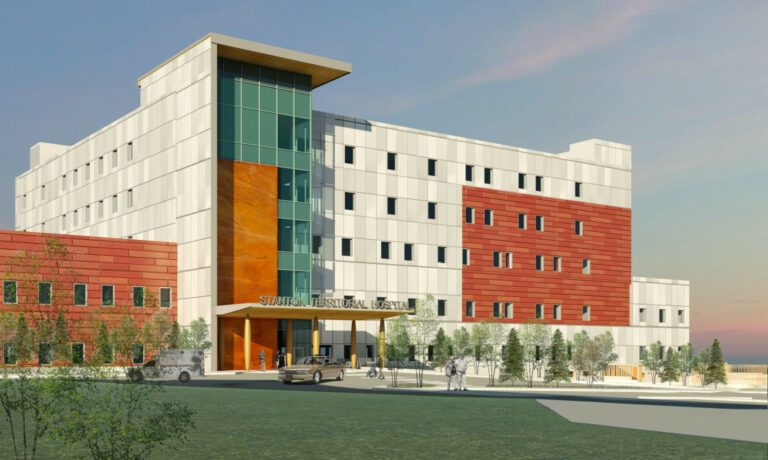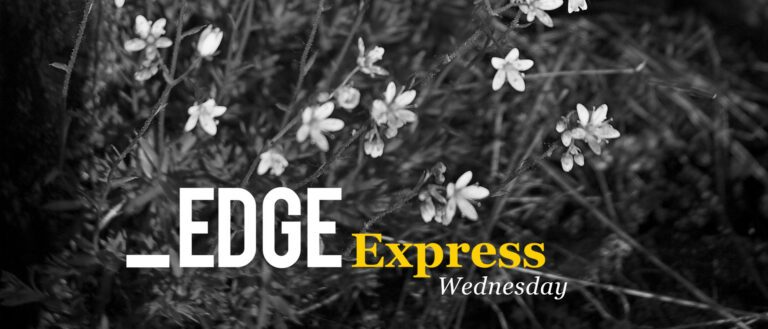On EDGE | ANALYSIS
Last Thursday, I visited one of the downtown malls to chat with a security guard – we’ll call him John – about the visible increase in security personnel throughout the city of late. John was happy to share his observations on the condition of anonymity, though he said he might have to dash anytime during our conversation – “You never know when something is going to happen.”
Within two minutes, someone had come into his office to report an individual who was supposedly smoking something – “smells like crack” – near the entrance to the mall. John was off.
“This week alone I’ve filled out two police statements, and several thumb drives worth of video to give to the police… This winter alone, I’ve had to defend myself more times in two months than the two years I’ve had to work. That’s a lot, you know.”
“I should be looking out for shoplifters, and that sort of thing, not herding people,” he said, sitting back down, noticeably distressed after a five-minute absence. “This week alone I’ve filled out two police statements, and several thumb drives worth of video to give to the police… This winter alone, I’ve had to defend myself more times in two months than the two years I’ve had to work. That’s a lot, you know.”
Things are getting worse: that’s the narrative I heard from security guards, property managers and half a dozen downtown business owners I spoke to. It’s a difficult proposition to quantify, as statistics relating to the homeless population are not collected systematically. But publicly accessible information seems to support it. Since the beginning of the year, for example, the Municipal Enforcement Division has responded to 166 “occurrences” in the public library alone, where their mandate is to deal with people who are intoxicated or causing a disturbance. That’s up from 41 over the same time period last year. And, as reported recently by Cody Punter in Northern Public Affairs, the City’s director of public safety, Dennis Marchiori, says the Yellowknife Fire Department has seen “a dramatic increase in call volume since the RCMP stopped responding to individuals being drunk in public.”
Whether it’s the RCMP’s more hands-off approach that’s driving the problem or a combination of other factors, one thing is apparent: the cost of not dealing with the homelessness problem is becoming unsustainable.
It might seem crass to speak about monetary cost when the human cost of inaction is painfully obvious to anyone who has spent time downtown. But it’s not for lack of goodwill and empathy that the various levels of government continue to dither. Money is the language spoken by politicians. And if watching the most disabled and vulnerable sector of our population suffer, often needlessly, isn’t enough to spur action, perhaps some cold cost-benefit analysis could help. The thing is, a serious investment in a housing first-style program in Yellowknife will save money, or at least come close to paying for itself. Here’s why:
Cost to business
No, you haven’t been seeing things: the number of security guards around Yellowknife has increased dramatically over the past year. According to Kelly Hayden, vice-president of Commercial Property & Hotels for Northview REIT (formerly Northern Properties), his company is now spending around $750,000 every year on security personnel alone, roughly $250,000 for their downtown commercial properties, including the YK Centre Mall, and a further $500,000 for their residential properties. These costs are being driven by the ongoing problem of homeless individuals breaking into Northview buildings to find overnight shelter, he says, or using commercial space during the day as a kind of ad hoc shelter, because they have little elsewhere to go.
When you consider that between just two property companies, albeit large ones, $1 million is being spent on security personnel, it seems fair to assume the total cost of security across Yellowknife stretches into the millions.
Carol-Ann Colpitts, property manager for the lower level of Centre Square Mall, estimates Huntingdon REIT spends $250,000 on mall security each year. That number could be reduced by upwards of $200,000, she says, if a serious effort was made to address the issue of homelessness.
When you consider that between just two property companies, albeit large ones, $1 million is being spent on security personnel, it seems fair to assume the total cost of security across Yellowknife stretches into the millions. Add to that features like reinforced doors and security cameras that are being installed apace: “You know you’re in trouble when you’re using security techniques used in Vancouver’s Downtown Eastside in a town of 20,000 people,” says Hayden. And again the costs of repairs: “People get drunk, people get violent, they break doors; there’s no coverage for broken doors, we have to cover that cost,” said Catherine Travis, property manager for the upper part of the Centre Square Mall. “Every time you’re replacing something you might as well say it’s $1000.”
Then there are more intangible costs to downtown business. Few business owners I spoke to could put a figure on the revenue they lose because of reduced pedestrian traffic – and, it must be said, the reduction in downtown shopping is related to many factors, including online shopping and big box stores. But without exception, the business owners I talked to said they receive ongoing complaints from customers about not feeling safe shopping downtown.
“Window browsing, you don’t see that here, because whenever you try to stop, and try to look at something, there’s someone swearing and running behind you,” said Tai Tran of P&T Alterations and Embroidery in the Centre Square Mall. “We want to see more kids and families in the mall, instead of drunk guys and fighting. We want to see Yellowknife’s downtown live again, not dying like this.”
Folks at City Hall talk a good game on downtown revitalization: Business Improvement Districts, #ShopYK social media campaigns, land acquisition for beautification projects like the one proposed for the 50/50 lot. But the biggest detriment to a vibrant commercial centre, at least in the mind of business owners, is the cost associated with homelessness.
Public Costs
The enormous and rising costs faced by the private sector are mirrored on the public side of the coin. Again, numbers are hard to come by, but some outlines of a picture can be pieced together.
Take the Municipal Enforcement Division, for example. Those 166 incidents MED officers have responded to so far this year at the public library are one quarter of all “occurrences” (including things like parking meter checks or road stops) the division has been involved in since the beginning of the year. It’s impossible to cost that out with publically accessible data, but it’s clearly a massive use of municipal resources. Or look at police and ambulance response. Neither the RCMP nor the City collects demographic data on who they respond to, but one illustrative number was given by the Centre Square Mall’s Travis: since February, she’s called the RCMP 35 times and emergency services seven times for issues she says were directly related to the homeless population.
Clearly, costs to the health system are huge. The state of being homeless has a direct impact one’s health outcomes, so much so that a 2009 study looking at “Mortality among residents of shelters, rooming houses, and hotels in Canada,” found that “among those who were homeless or marginally housed, the probability of survival to age 75 was 32%… in men and 60%… in women.”
It’s been estimated that the 2007-2008 TB outbreak cost the public healthcare system approximately $500,000, an amount that includes the time of medical specialists, nurses, general practitioners, public health workers and community workers.
As researcher Nick Falvo pointed in 2011, “Crowded living conditions in Yellowknife’s homeless shelters have probably contributed to both adverse health outcomes and substantial costs to the public purse. In 2007-2008, a tuberculosis (TB) outbreak hit the men’s emergency shelter in Yellowknife. In all, there were 14 cases of active TB associated with the outbreak… it has been estimated that the 2007-2008 TB outbreak has cost the public healthcare system approximately $500,000 thus far, an amount that includes the time of medical specialists, nurses, general practitioners, public health workers and community workers.”
And the Dickensian crowding at the shelters has not decreased. According to Punter, “As of last year, the [Salvation Army] shelter was providing an average of 38.6 people a bed every night. The capacity is supposed to be 24.”
The response
No matter how you slice it, the cost of inaction is immense. And the thing is, the numbers don’t have to be like this.
Alberta, Canada’s most progressive jurisdiction when it comes to housing first, has seen tremendous success. Between 2009 and to 2013, 8,748 previously homeless Albertans were housed across seven cities using the housing first model. According to a University of Calgary research paper published in 2014, “Housing First clients experienced significant reductions in public-system usage: 85 per cent fewer days in jail; 64 per cent fewer days in hospital; 60 per cent fewer interactions with Emergency Medical Services; 60 per cent fewer emergency room visits; and 57 per cent fewer interactions with police.”
Findings of this nature are echoed again and again in the available literature:
A 2013 study from B.C. looking at conviction rates among mentally ill and addicted people with criminal records before and after housing first intervention, found that reconviction rates among housing first clients were 70 percent less than the control group if the clients were housed in scattered site accommodation (independent apartments or homes) and 45 percent less than the control group if housed in group accommodation.
A 2009 study published by the Journal of of American Medicine, entitled “Effect of a Housing and Case Management Program on Emergency Department Visits and Hospitalizations Among Chronically Ill Homeless Adults,” found that “compared with the usual care group, the intervention group had a relative reduction of 29% in hospitalizations… 29% in hospital days… and 24% in emergency department visits.”
Put another way: “for every 100 homeless adults offered the intervention, the expected benefits over the next year would be 49… fewer hospitalizations, 270… fewer hospital days, and 116… fewer emergency department visits.”
Think about that in a Yellowknife context for second. If we applied this analysis to the Community Advisory Board’s point-in-time-count number (problematic as it is) which puts our homeless population at 150, that would mean 405 fewer hospital days. Now consider that the cost of simply keeping someone at Stanton for a day is between $1,600 and $2,000 (Falvo’s numbers from 2011) and those savings alone quickly add up to more than than the entire Yellowknife Salvation Army budget for 2014.
A landmark 2002 study in New York entitled “Public Service Reductions Associated with Placement of Homeless Persons with Severe Mental Illness in Supportive Housing” found that across seven nodes of the public system, placement in supportive housing “was associated with a reduction in services use of $16,281 per housing unit per year.” This was replicated in a five-year housing first study conducted by the Mental Health Commission of Canada that found the “receipt of HF services for HN (high needs) participants resulted in average reductions of $21,375 in the cost of other services being used by this group.”
I’m throwing a lot of numbers around here. But here’s an executive summary: the overwhelming evidence is that investing serious money in the ongoing homeless crisis will not just save lives and heal longstanding wounds. It will save us so much more in tangible and intangible results.
Recouping the cost
In both the New York and Canadian studies, housing first intervention provided almost full cost recovery when targeted at the high-needs population. In the Canadian case, they found every $10 dollars spent yields an average $9.60 reduction in cost, and for the very highest needs group, “over two-year period following study entry, every $10 invested in HF services resulted in an average savings of $21.72.”
And that’s only the costs counted. The New York study puts it best: “Many of the potential benefits of the housing initiative were not measured here. Residents of supported housing are more likely to secure voluntary or paid employment… and to experience an improved quality of life. Investments in supported housing have also been shown to be associated with improved neighborhood quality and property values… Lastly, the social value of reduced homelessness and of providing greater social protection for those who are disabled, while not possible to translate into economic terms, constitutes an important if less tangible benefit to society.”
This gets to the heart of it. This study was from 2002; why are we still debating whether or not to offer supportive housing to the most vulnerable population? It just makes sense. Morally, from a downtown business and revitalization standpoint, and yes, form a public finance perspective. We may be in a budget crunch, but diverting resources towards this problem will save money in the long term.
Later this month, Caroline Cochrane, the GNWT minister responsible for homelessness, is hosting a meeting of dozens of no-doubt intelligent and well-meaning people interested in addressing at the problem. It’s pretty undeniable, the problem is getting worse. What’s also undeniable is that there are solutions that are proven to work. Let’s hope the bureaucrats, politicians and NGO workers take hint from our security guard friend, John: “I get the bad feeling that some of the elected officials are squabbling over cookie crumbs, for a budget or whatever. Meanwhile all that talking is eroding whatever budget they could get because all they’re doing is talking. Make a decision. Own up to it.”







